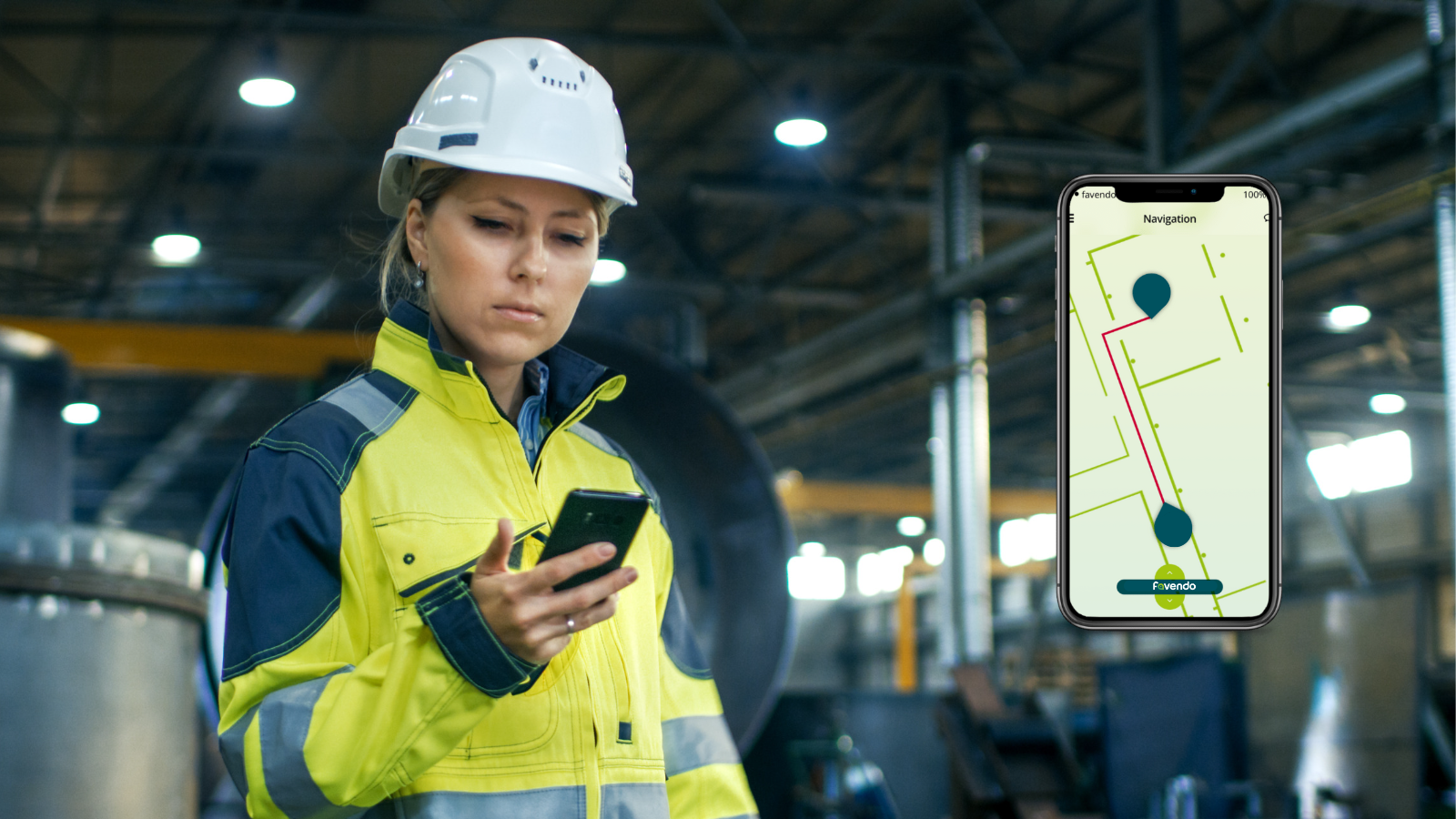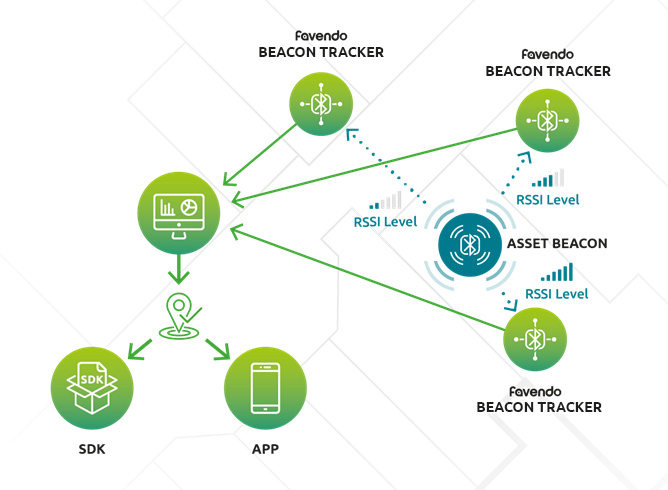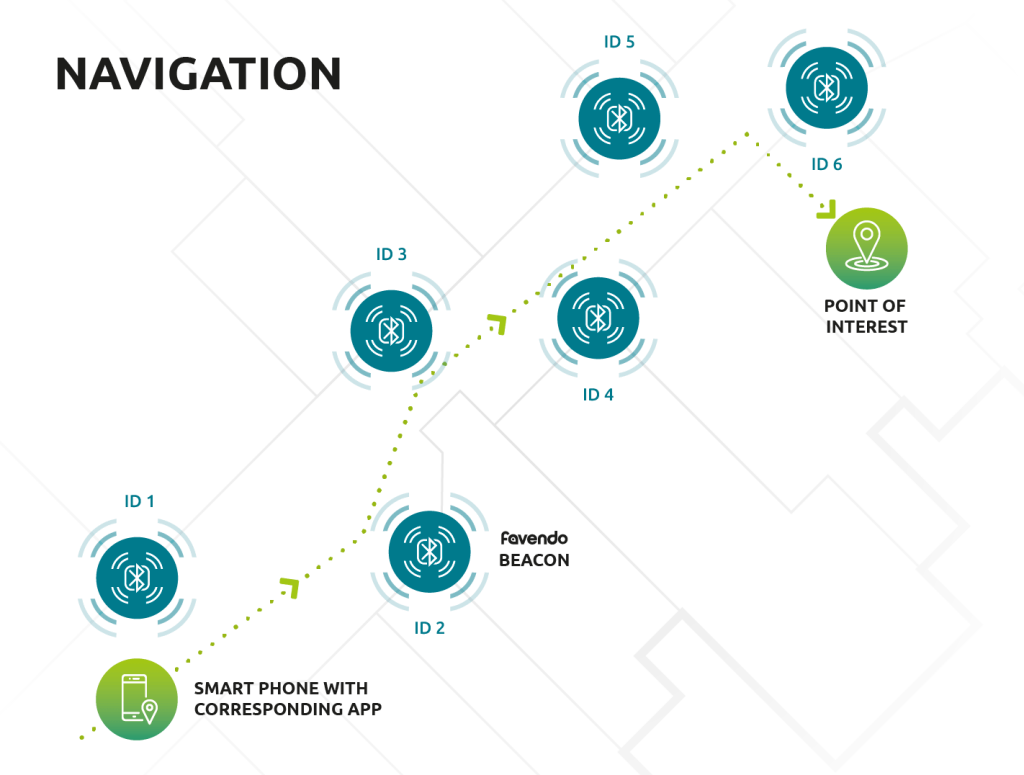06.04.2023
Asset Tracking vs. Indoor Navigation: 2 sides of one coin?

Asset Tracking and Indoor Navigation are the same thing? We didn’t say they were. But there is definitely a connection between the two services and the functionality itself is quite similar. What differentiates Asset Tracking and Indoor Navigation is the “location” where the position is calculated. In the case of the former, we talk about server-based positioning, which means that the position of the asset in question is determined on a server. Whereas in navigation, the position is calculated on the user’s device. This is called client-based positioning.
Asset Tracking: server-based positioning using sensor technologies
Basically, both positioning principles are based on the transmitter-receiver principle. A transmitter, in this case the asset beacon, which is attached to the object to be tracked, sends BLE signals to a beacon tracker that is permanently installed in the room. Using the RSSI method, the position of the beacon can be calculated. The stronger the signal, the closer the beacon is to the respective tracker. If at least three trackers receive the signal of a system, it is possible to precisely determine every point in a room based on the signal strength. This is known as trilateration.
Accuracy and signal coverage
A special transmitter-receiver infrastructure consisting of permanently installed beacon trackers and mobile asset beacons is therefore always required for an indoor tracking solution. It is important to ensure sufficient coverage so that the position can be determined on the basis of the signal strengths. Exactly how many trackers are needed varies from project to project and always depends on the nature of the premises. In rooms with lots of corners, coverage is more difficult to achieve and requires more precise planning than in open, straight rooms. But also the area, ceiling height or materials such as metals play a role. That’s why it’s especially important when planning an RTLS solution to call in professionals who can handle the planning and rollout of the installation and rely on their expertise.

The beacon trackers interpret the RSSI level of the asset beacon and send the received signal to the location engine. The Commander Location Engine calculates the position of the asset on the server side. This is then output via SDK or app.
Indoor Navigation: Client-based positioning with BLE wireless standard
As mentioned at the beginning, the difference between the two prnciples lies primarily in where the position calculations take place. Because like tracking, Favendo’s solution for Indoor Navigation is also based on BLE infrastructures. The beacons act as signal transmitters and send their ID at short intervals via Bluetooth with a range of 30 to 100 meters. However, the user’s position is not determined on a server, but on the user’s end device. Hence client-based positioning. The smartphone receives and interprets the transmitted ID and is located on the floor plan of a building based on the signal strength.
Once the device and thus the user have been located, it is possible to guide the user from the starting position to any point of interest (POI) without any problems.
The smartphone with the appropriate app receives the IDs of the installed beacons via BLE. Depending on the signal strength, the user is navigated to his POI.

Real time indoor positioning
Thanks to the BLE infrastructure, the user can be navigated to any destination in real time. The route is displayed on the user’s cell phone or tablet. Favendo’s software for navigation comes either in the form of an SDK for integration into an existing app or in the form of a white-label app.
The BLE technology for Indoor Navigation feels like GPS in the outdoor area for the user. On top of that, Bluetooth technology offers the advantage that individual floors can be identified. This makes the technology particularly exciting – especially for building complexes with many levels, cruise ships, shopping malls, or transshipment points like train stations or airports.